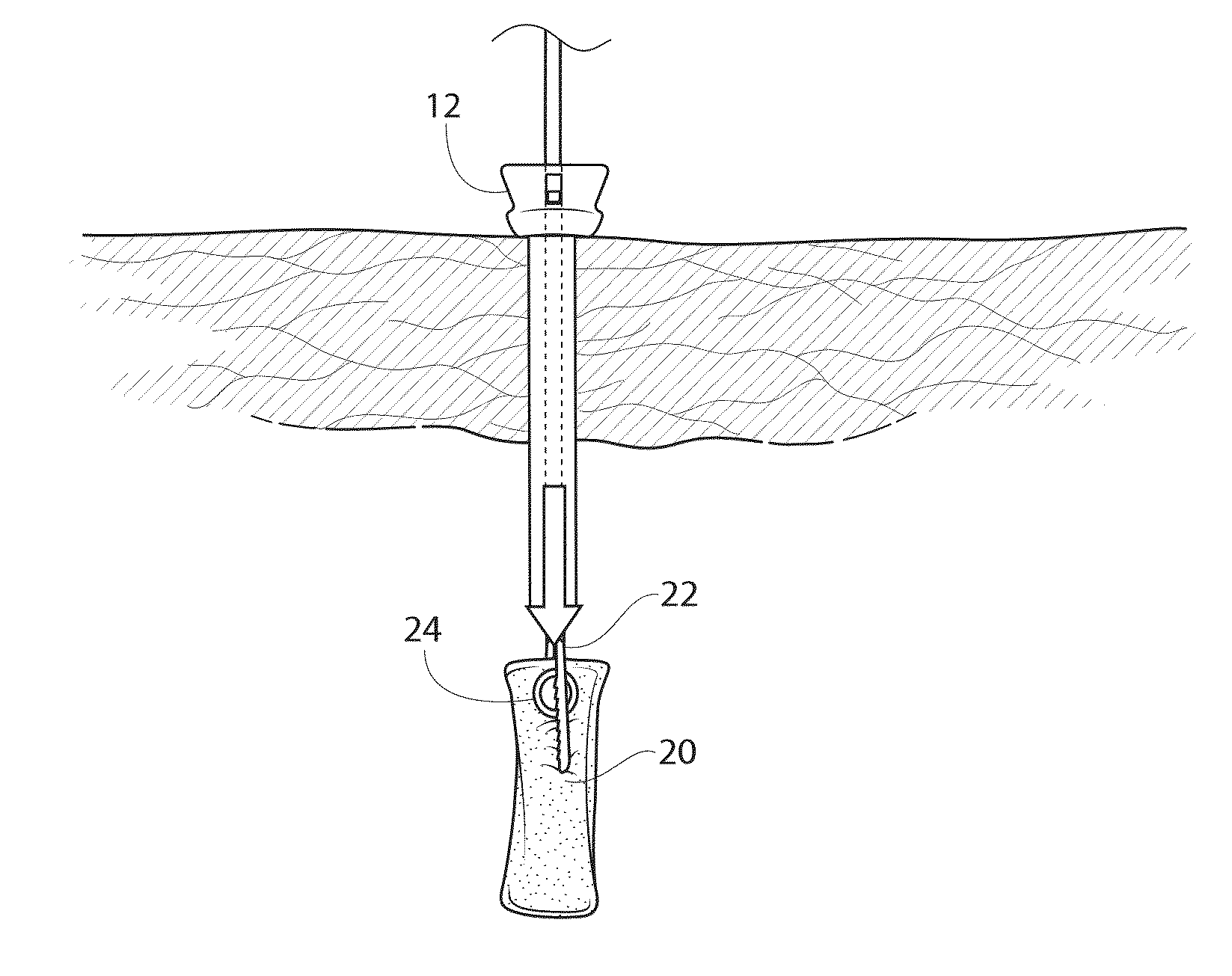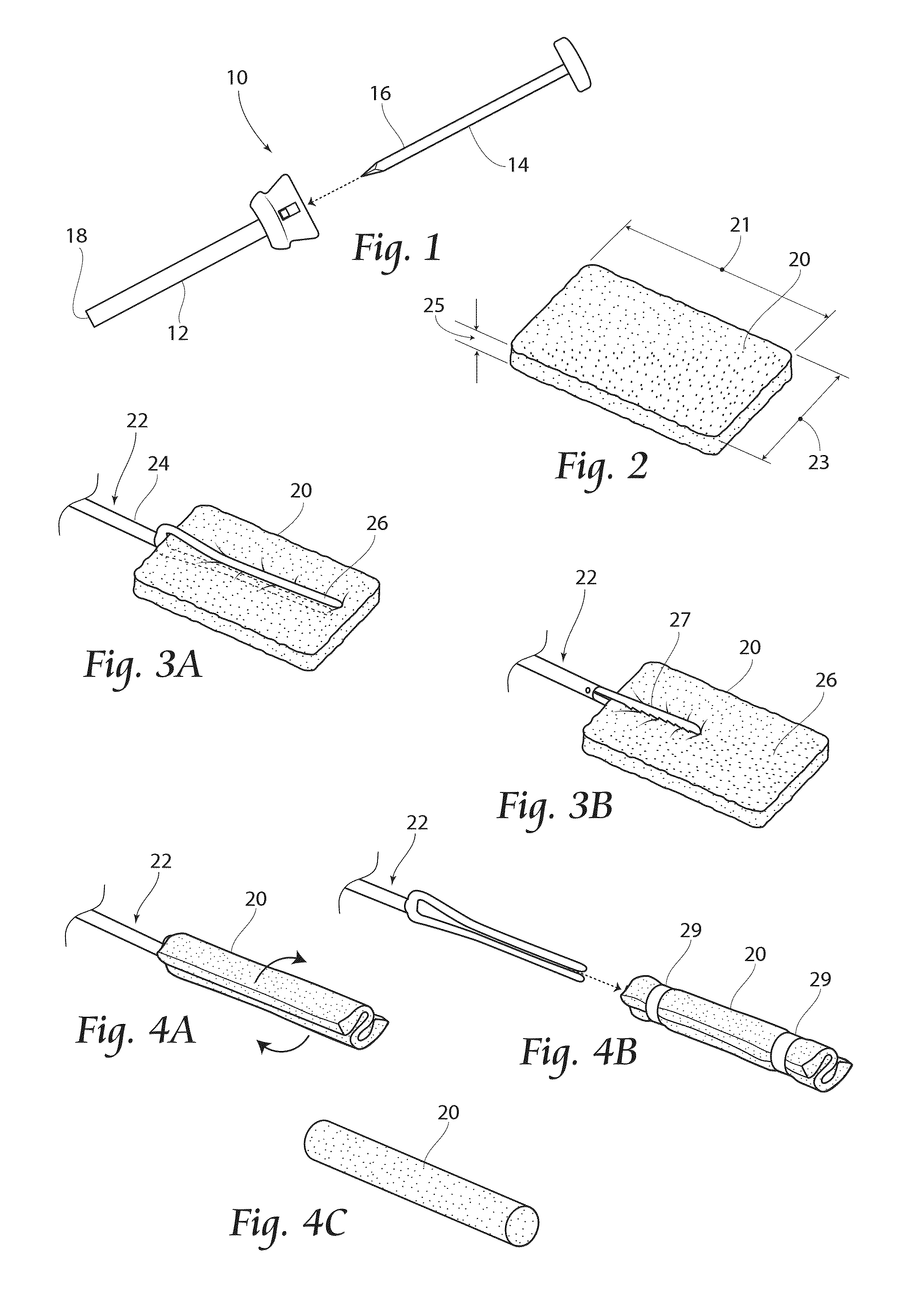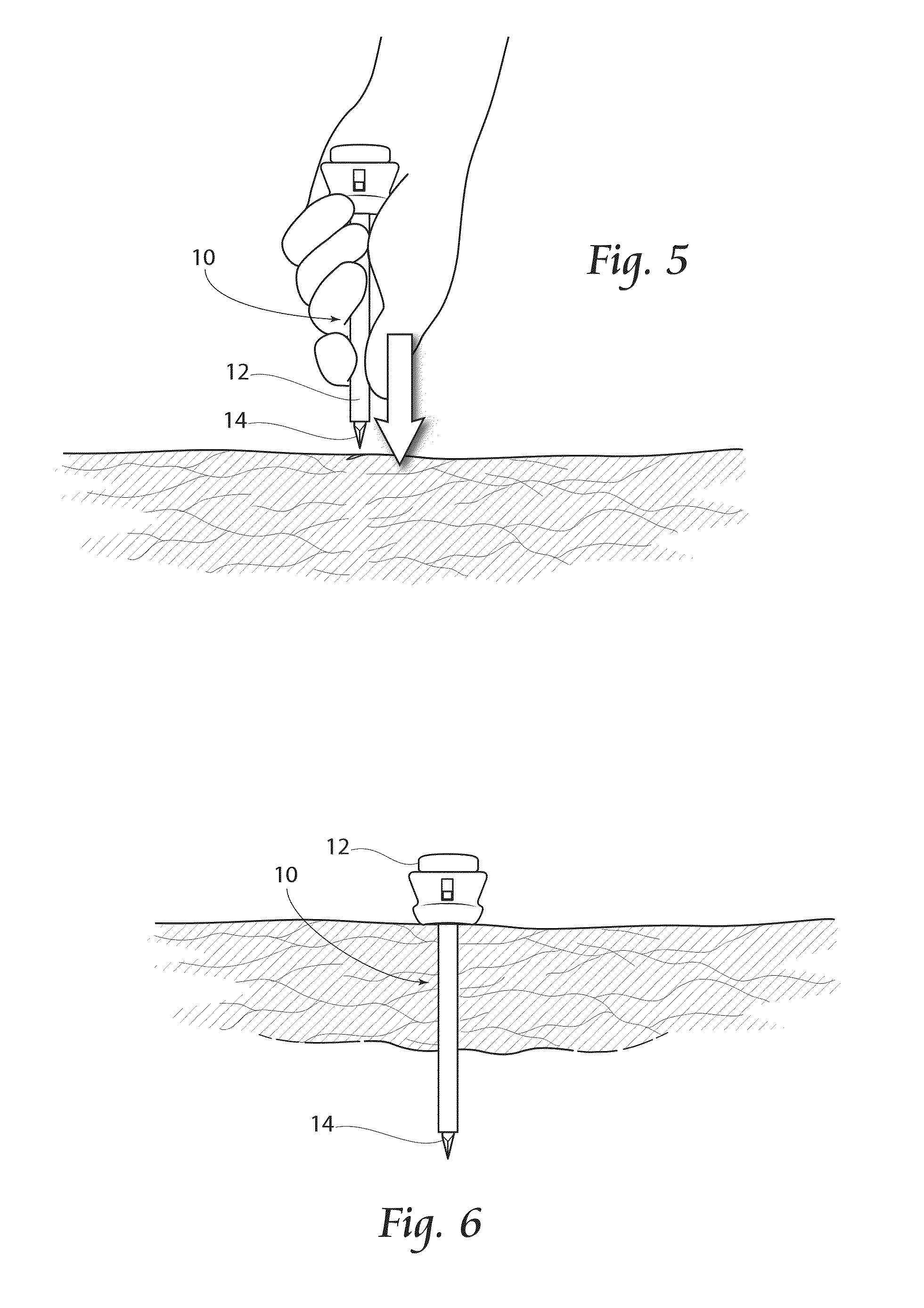Minimally Invasive Endoscopic/Laparoscopic Highly Absorbent Surgical Devices, Methods and System
- Summary
- Abstract
- Description
- Claims
- Application Information
AI Technical Summary
Benefits of technology
Problems solved by technology
Method used
Image
Examples
embodiment 20
[0059]FIG. 4C provides an alternate embodiment 20″ of a sponge cartridge unit, including a unitary sponge device 20 of generally cylindrical shape. Any of the cartridge units 20′,20″ may be used alone or in conjunction with an introducer device, such as that shown in FIGS. 11 and 12, and described below.
[0060]Referring now to FIGS. 5 and 6, the assembly 10 is shown being inserted into tissue and into a body cavity. The sharpened end of the trocar 14 is pushed downwardly into the tissue and eventually extending into the body cavity, as shown in FIG. 6. Once inserted into the body cavity to a desired depth, the trocar 14 is removed from the assembly 10, with the cannula 12 remaining in place to allow a pathway into the body cavity.
[0061]As shown in FIG. 7, the absorbent device 20 is being inserted into the cannula 12 by way of the insertion device 22, as described above. The absorbent device 20 is in the compact, cylindrical position, which allows it to pass through the cannula 12, in...
first embodiment
[0079]FIG. 34 depicts a sponge kit 300 according to the present invention. The kit 300 preferably includes a container 302, such as a draw-formed thermoplastic tray, which may form one or more compartments 304. The compartments 304 are preferably sealable by, e.g., plastic film (not shown) which may be adhered to the tray 302. This first kit 300 includes a cannula 12, a trocar 14, a sponge retraction tool 22, one or more sponge devices 20, and instructions 306 for using the sponge 20 in conjunction with the provided system components. The instructions for use 306 generally would set forth the method steps described herein. Each provided component may be placed in its own compartment 304, or a plurality of components may share a compartment 304. Additionally, a kit 300′ may include a sponge introducer 100, as shown in FIG. 35. Additionally or alternatively, the cannula 12 and trocar 14 may be eliminated from a kit 400, and / or a plurality of sizes of sponges 20 may be provided, as sho...
PUM
 Login to View More
Login to View More Abstract
Description
Claims
Application Information
 Login to View More
Login to View More - R&D
- Intellectual Property
- Life Sciences
- Materials
- Tech Scout
- Unparalleled Data Quality
- Higher Quality Content
- 60% Fewer Hallucinations
Browse by: Latest US Patents, China's latest patents, Technical Efficacy Thesaurus, Application Domain, Technology Topic, Popular Technical Reports.
© 2025 PatSnap. All rights reserved.Legal|Privacy policy|Modern Slavery Act Transparency Statement|Sitemap|About US| Contact US: help@patsnap.com



